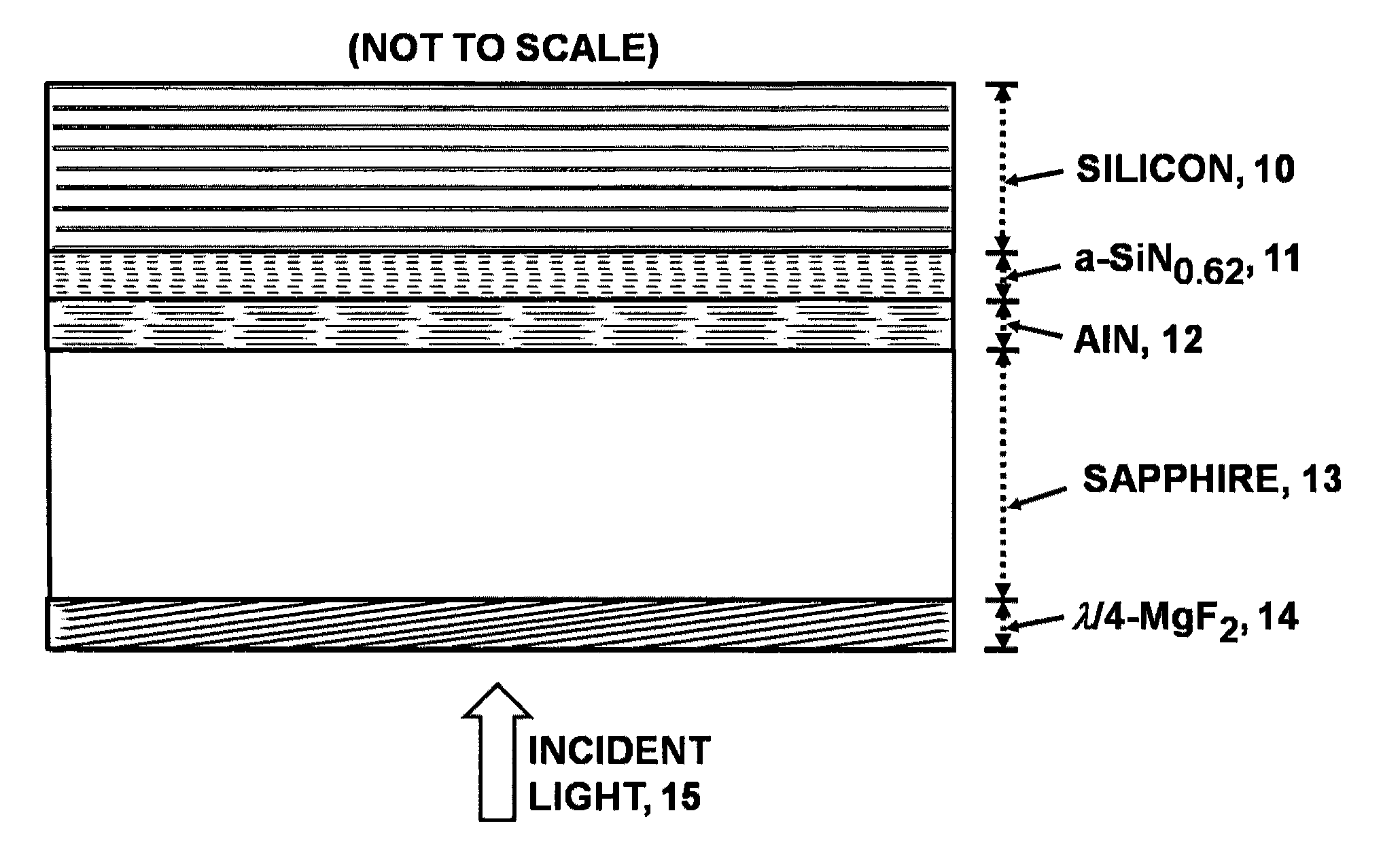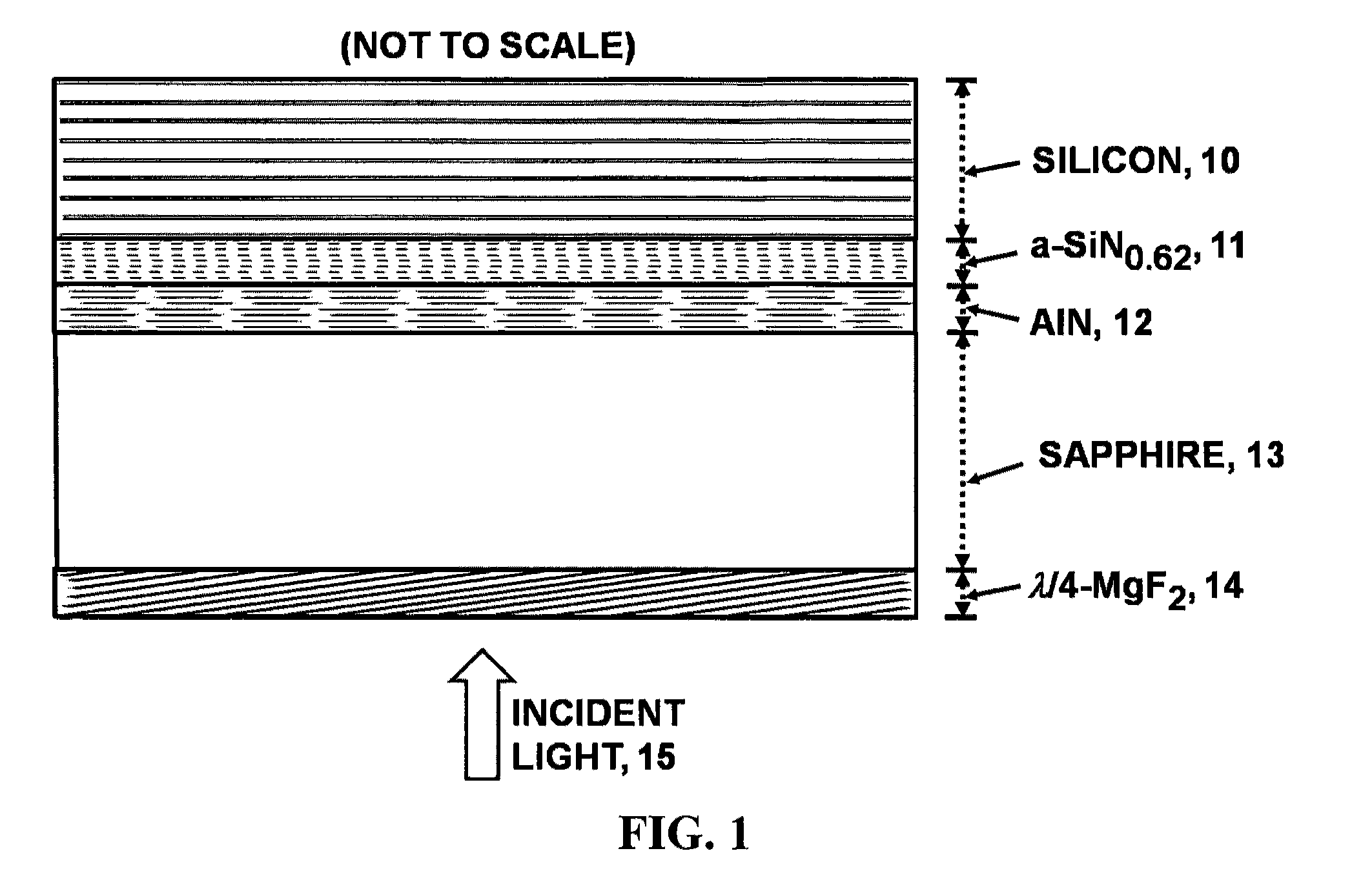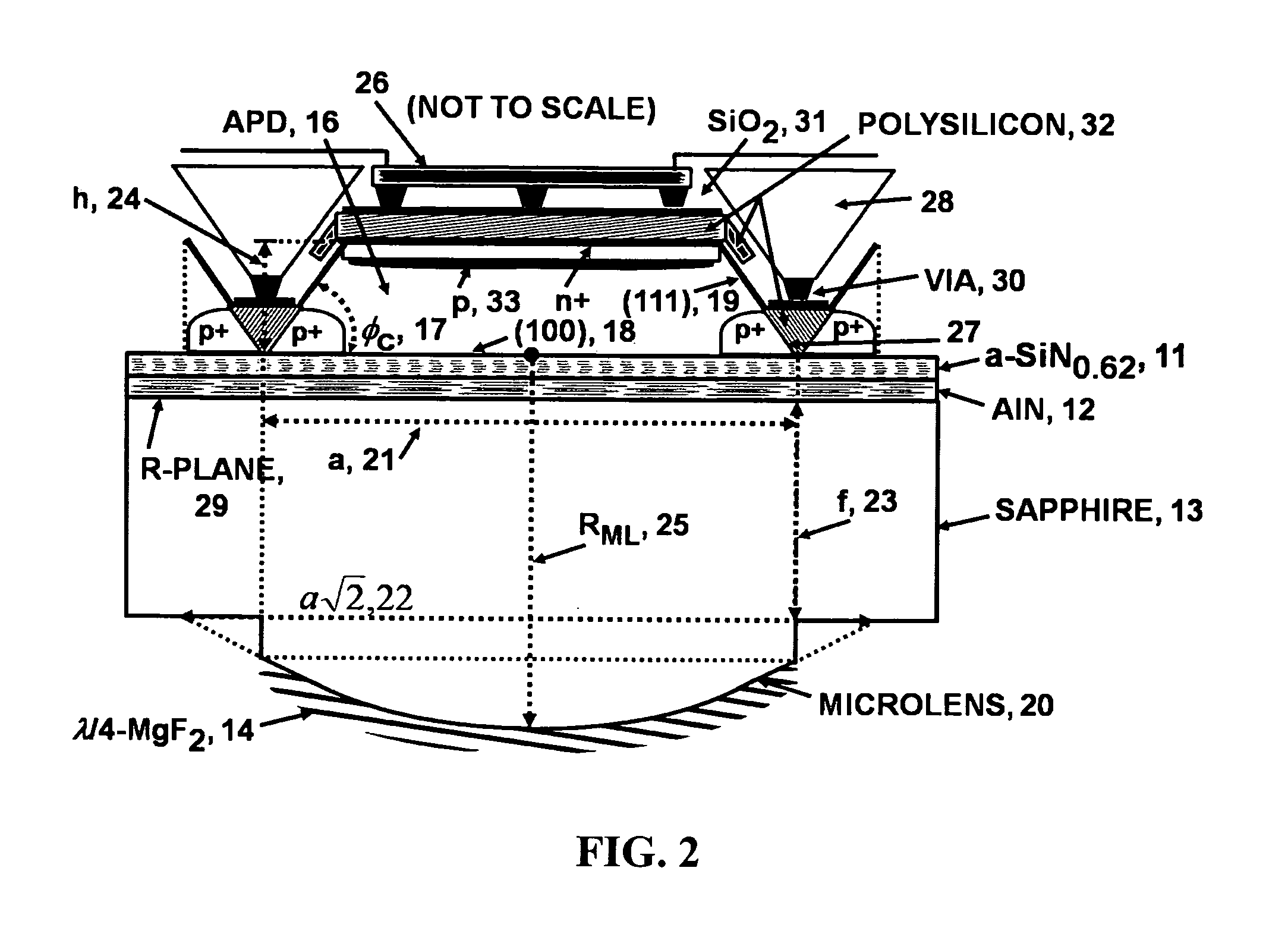Very high transmittance, back-illuminated, silicon-on-sapphire semiconductor wafer substrate for high quantum efficiency and high resolution, solid-state, imaging focal plane arrays
a semiconductor wafer and quantum efficiency technology, applied in the field of very high transmittance, back illumination, silicon-on-sapphire semiconductor wafer substrates for high quantum efficiency and high resolution, solid-state imaging focal plane arrays, etc., can solve problems such as refractive index mismatch, and achieve high transmittance, high transmittance, and high transmittance. high
- Summary
- Abstract
- Description
- Claims
- Application Information
AI Technical Summary
Benefits of technology
Problems solved by technology
Method used
Image
Examples
Embodiment Construction
[0033]Referring to FIG. 1, a depiction of the very high transmittance, back-illuminated, silicon-on-sapphire semiconductor wafer substrate is shown in a non-scale rendering, consisting of an ordered stacking of material layers including the top most single crystal silicon (Si) semiconductor layer 10, non-stoichiometric, silicon rich, amorphous silicon nitride antireflective layer with nitrogen to silicon ratio N:Si=0.62 or a-SiN0.62 11, single crystal aluminum nitride (AlN) antireflective layer 12, optically transparent single crystal sapphire (α-Al2O3) wafer substrate 13, and back-side one quarter wavelength thick magnesium fluoride (λ / 4-MgF2) antireflective layer 14. Solid-state detector devices are meant to be fabricated in the silicon 10 semiconductor layer and back-illuminated by light 15 incident from the back-side of the substrate that traverses the optimal thickness material layers λ / 4-MgF2, sapphire, AlN and a-SiN0.62 with minimal reflection and absorption losses, to enter ...
PUM
 Login to View More
Login to View More Abstract
Description
Claims
Application Information
 Login to View More
Login to View More - R&D
- Intellectual Property
- Life Sciences
- Materials
- Tech Scout
- Unparalleled Data Quality
- Higher Quality Content
- 60% Fewer Hallucinations
Browse by: Latest US Patents, China's latest patents, Technical Efficacy Thesaurus, Application Domain, Technology Topic, Popular Technical Reports.
© 2025 PatSnap. All rights reserved.Legal|Privacy policy|Modern Slavery Act Transparency Statement|Sitemap|About US| Contact US: help@patsnap.com



